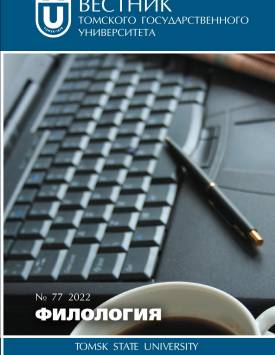Journalism science in the care of the journalistic trade union: Hindsight
The author’s aim in the article is to identify the historical bases of the supervision of Russian journalism science by the journalistic trade union organization and to describe positive examples of such activities in the past. Solving this problem, the author describes and analyzes, for the first time in the scientific literature, the practice of the work of the journalism research center that existed in the system of the journalistic trade union - the scientific office (or the Cabinet of the Press) at the Central Bureau of the Press Workers Section (1922-1930) in the All-Union Central Council of Trade Unions (the head of the Cabinet was Mikhail Semenovich Gus). The paragraphs describing the evolution of journalistic professional organizations in the first half of the 20th century (starting from the period of the First Russian Revolution of 1905-1907) and the newspaper science as the first Russian scientific school in the field of journalism (it existed in the 1920s-1930s), precede the main part of the article. Further, on the basis of archival research and the conducted discourse analysis of the printed publications of the studied time, the author provides information about the structure of the Cabinet of the Press under the Press Workers Section (its three sections and several problem-based commissions), the number and members of the staff, organizational and financial foundations of the staff’s research activities and their cooperation with representatives of other branches of newspaper science (mainly localized in the Moscow journalism higher school), the problems of research conducted in the Cabinet (press history, problems of information in the Soviet press, language of the press, rational organization of press campaigns, organization of press enterprises, fundamentals of rational layout). The author pays special attention to the forms of functioning of the problem-based commissions of the Cabinet (presentation and discussion of scientific reports at their meetings), as well as using scientific communication tools by the leaders and members of the scientific team formed around the Cabinet of Press at the Central Bureau of the Press Workers Section: participation in global scientific meetings (for example the First International Congress of Press Researchers, which took place in August 1928 in Germany) and the publishing activity expanded by the Cabinet (collections of scientific papers and educational materials). In the final paragraph of the article, the author introduces into scholarly discourse information about the circumstances of the Cabinet’s closure. It was a part of a politically motivated campaign to destroy science centers which were independent of the general line in the USSR and to completely subordinate science to the practical tasks of the Stalin power policy. The author declares no conflicts of interests.
Keywords
journalism science, newspaper science, research office, Cabinet of Press, journalistic trade union, Central Bureau of the Press Workers Section, Mikhail GusAuthors
| Name | Organization | |
| Fateeva Irina A. | Moscow Pedagogical State University | ia.fateeva@mpgu.su; fateevafia@gmail.com |
References

Journalism science in the care of the journalistic trade union: Hindsight | Vestnik Tomskogo gosudarstvennogo universiteta. Filologiya – Tomsk State University Journal of Philology. 2022. № 77. DOI: 10.17223/19986645/77/13
